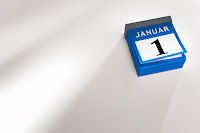 I enjoy the colorful lights that adorn the neighborhoods this time of year. As I put up my own lights, I worried that I might be creating a fire hazard by plugging in one more string of lights than the instructions allowed. I was also guilty of connecting two extension cords when the little plastic tag warned that two extension cords should not be plugged in together. If plugging in one extra strand of lights or connecting two extension cords creates a fire hazard, then some of my neighbors better get out the garden hose and keep the fire department on speed dial. I wonder if living next door to a fireman will help?
I enjoy the colorful lights that adorn the neighborhoods this time of year. As I put up my own lights, I worried that I might be creating a fire hazard by plugging in one more string of lights than the instructions allowed. I was also guilty of connecting two extension cords when the little plastic tag warned that two extension cords should not be plugged in together. If plugging in one extra strand of lights or connecting two extension cords creates a fire hazard, then some of my neighbors better get out the garden hose and keep the fire department on speed dial. I wonder if living next door to a fireman will help? After seeing how many extension cords, strings of lights and animated characters my neighbors have, I was feeling a better about my two little infractions, until I read the article about how Customs and Border Protection seized some counterfeit Santa lights. Working together with the U.S. Consumer Product Safety Commission (CPSC), the Import Safety Commercial Targeting and Analysis Center identified these potentially dangerous products. In late November, CBP officers in Los Angeles seized 151 life-size decorative lights of Santa Claus, a snowman and a polar bear because the electrical adaptors contained counterfeit Underwriters Laboratories, Inc. (UL) markings.
Underwriters Laboratories is an independent global company that tests products, tools, equipment and other articles for potential risk of fire, shock and personal injury. Certain electrical articles sold in the U.S. must comply with mandatory requirements of UL/ETL or the equivalent in order to meet federal safety standards. Products with counterfeit marks have not been properly tested or certified and could cause safety hazards to users. How can the consumer determine if the UL mark is genuine? UL provides a list of the four elements of a genuine mark and information about how to spot counterfeit marks.
Genuine Marks
The article should contain:
 |
| Underwriters Laboratories |
- the name and/or certification mark of Underwriters Laboratories. The “UL” should be located in a circle.
- the word “LISTED” in capital letters.
- a control number consisting of four alphanumeric characters or issue number consisting of a sequence of 4 to 6 numbers. The issue number may or may not be preceded by one or two letters and the phrase “Issue No.”
- a product identity.
Counterfeit Marks
An article may be counterfeit if the
- product label does not contain the four elements listed above.
- product references UL on the packaging or on the product itself but has no company name, trademark, or other designation authorized by UL.
- packaging contains marks with the letters “UL” that are side-by-side instead of staggered, the lack of a control or issue number or the words “Approved” or “Pending” instead of “LISTED” or “CLASSIFIED.”
- product packaging contains grammatical and/or spelling errors.
- product is missing appropriate documentation for care, use and maintenance.
After I post this article, I will go outside to check for UL information attached to the lights, extension cords and the animated reindeer. I will check my own lights and hope that my neighbor’s 8 ft inflatable Santa, the cute lighted polar bear, animated reindeer and long strings of lights attached to multiple extension cords contain genuine UL certification.
Update: My outdoor lighting sets contain the UL hologram stickers.
Click HERE to view another recent case where a U.S. business owner pleaded guilty to trafficking in counterfeit circuit breakers. Not only were the circuit breakers marked with counterfeit manufacturer's trademarks, but they also contained counterfeit "UL" labels.
Sources:
Underwriters Laboratories, Inc. (n.d.). How to spot fakes. Retrieved from http://www.ul.com/global/eng/pages/offerings/services/programs/anticounterfeitingoperations/fake/
U.S. Customs & Border Protection. (2011, December 13). Counterfeit Santa Lights Seized by CBP. Retrieved from http://www.cbp.gov/xp/cgov/newsroom/news_releases/local/12132011.xml


